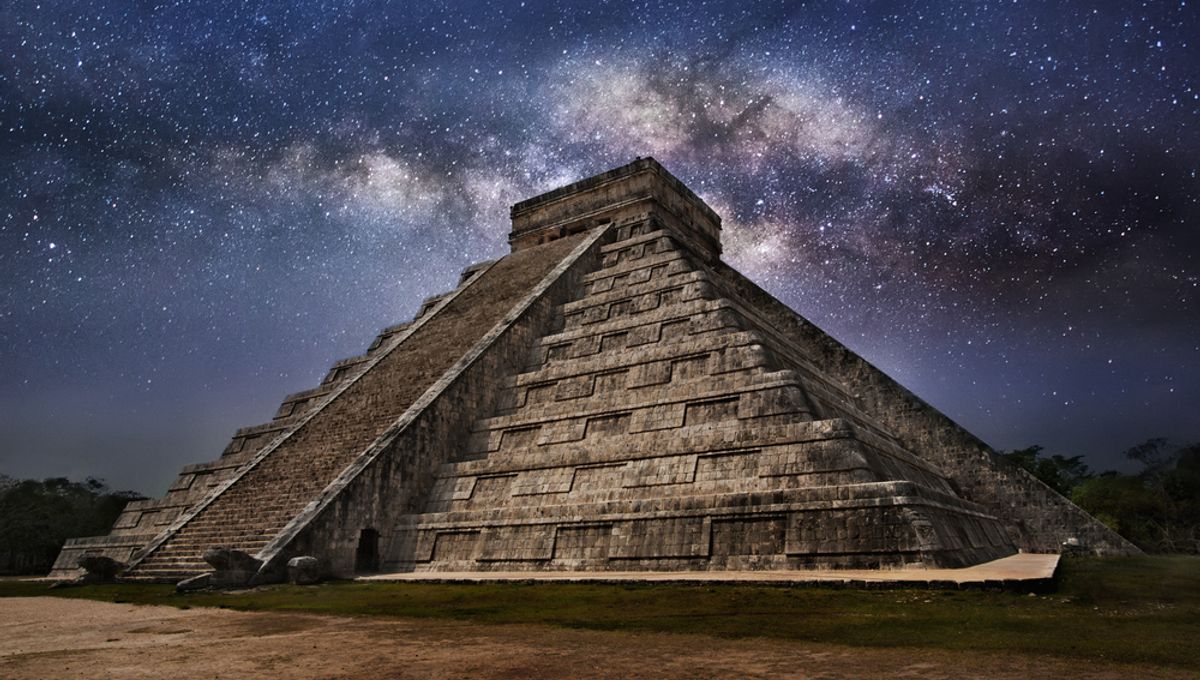
Astronomy and timekeeping were two of the Ancient Maya’s biggest loves, and new research may have finally revealed the intricate system that once connected these two pillars of Mesoamerican life. According to the study authors, the enigmatic Maya calendar can be used to track the movement of the planets across the night sky over a 45-year period, thus solving a long-standing riddle regarding the structure and function of the iconic pre-Hispanic almanac.
Unlike our relatively simple system of days, months, and years, the Maya calendar made use of a complex series of interlocking cycles, such as the 260-day sacred count known as the Tzolk’in and the 365-day secular calendar, or Haab’. These two cycles became synchronized once every 52 years, giving rise to an overall calendric period called the Calendar Round.
However, inscriptions found at various Maya sites describe a further 819-day count. Analysis of these glyphic texts has revealed that each date in this cycle was associated with one of the four cardinal points, which means it took four rounds of 819 days – or about nine years – to complete the entire series.
Knowing the Maya, researchers have long suspected that this cycle might be related to the synodic period of the planets, which refers to the length of time it takes each planet to return to the same position in the sky as viewed from Earth. Mercury, for example, has a synodic period of 117 days, which fits perfectly into 819 when multiplied by seven.
However, none of the other planets’ synodic periods can be multiplied to give 819, leading to confusion as to how this strange calendric system functioned. In their new study, however, researchers point out that 20 rounds of 819 days give a total of 16,380 days (roughly 45 years), which can be neatly divided to match up with every planet’s synodic period.
For example, Saturn takes 378 days to return to the same spot in the sky. Thirteen of these cycles therefore gives 4,914 days, which is exactly six times 819. Seven returns of Venus, meanwhile, coincides perfectly with five 819-day counts, while 39 repetitions of Jupiter’s synodic period matches up with 19 cycles of 819.
Mars, meanwhile, has a 780-day synodic period. When multiplied by 21, this gives a number that is precisely equal to 20 819-day counts. The study authors therefore say that “an expansion of the standard 4 × 819-day cycle to 20 periods of 819 days does provide a larger calendar system with commensurations at its stations for the synodic periods of all the visible planets.”
Perhaps most importantly, 16,380 is also a multiple of 260, which means that 20 rounds of 819 days match up perfectly with the Tzolk’in.
“Rather than limit their focus to any one planet, the Maya astronomers who created the 819-day count envisioned it as a larger calendar system that could be used for predictions of all the visible planet’s synodic periods, as well as commensuration points with their cycles in the Tzolk’in and Calendar Round,” conclude the researchers.
The study is published in the journal Ancient Mesoamerica.
Source Link: We Finally Know How The Maya Calendar Matches Up With The Planets